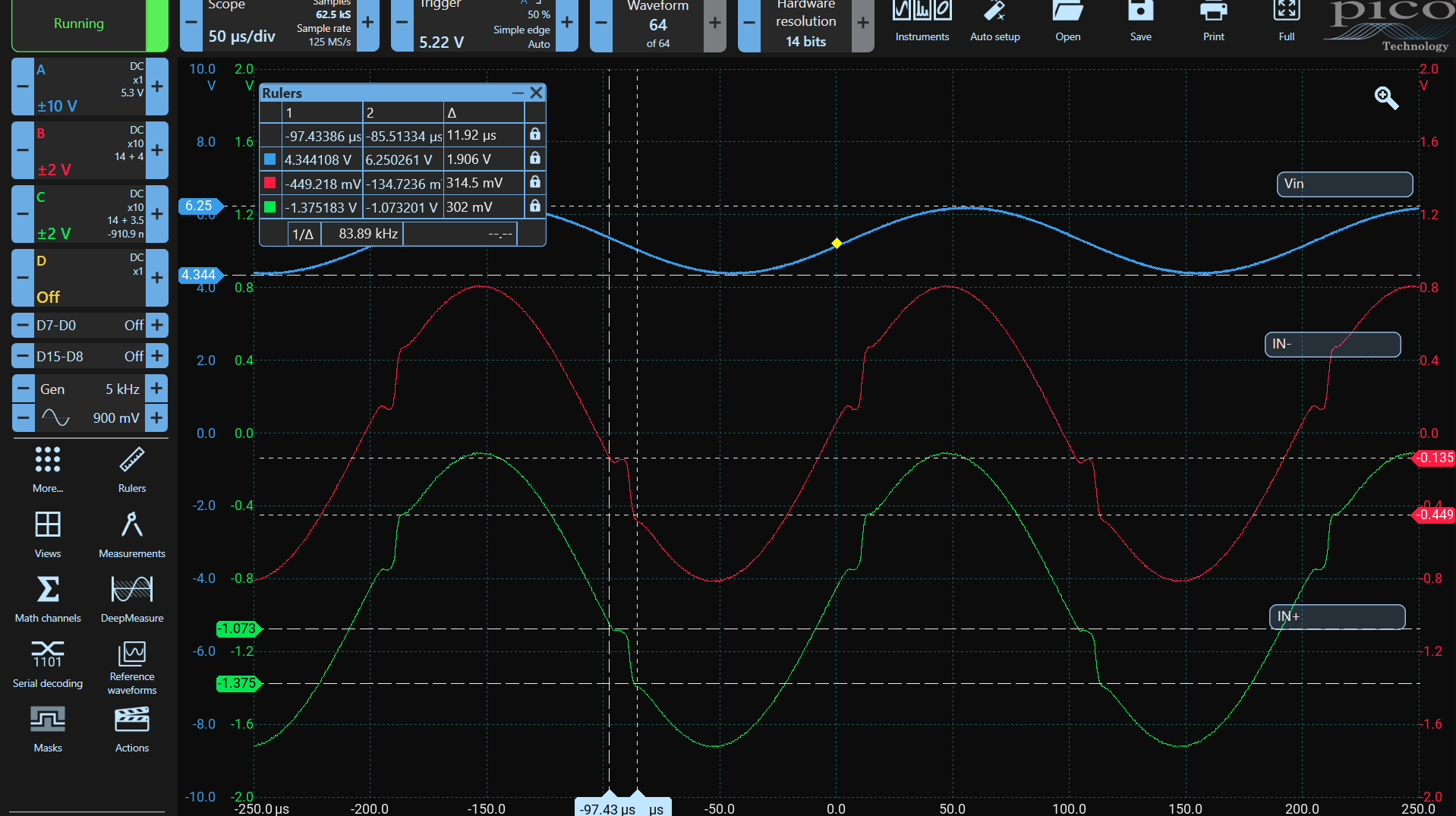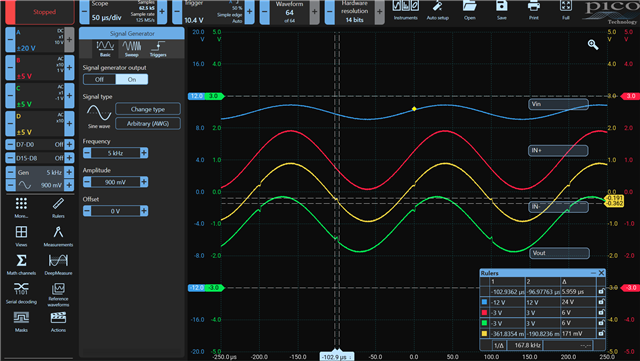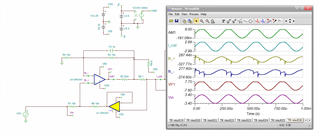Other Parts Discussed in Thread: INA240, OPA551, OPA548, OPA593, ALM2403-Q1, OPA2991, OPA596
Tool/software:
Hi,
I am using OPA541 in an improved howland pump to drive a coil. The coil parameters are R = 0.68 , L = 16 uH.
I am seeing output distortion when the frequency of Vin is above 1kHz. The circuit and the waveforms are below.
When I add a DC offset to the Vin the distortion is gone but the output is no longer centered around 0. Am I using a correct method to get rid of the distortion or is there another recommended technique .





















